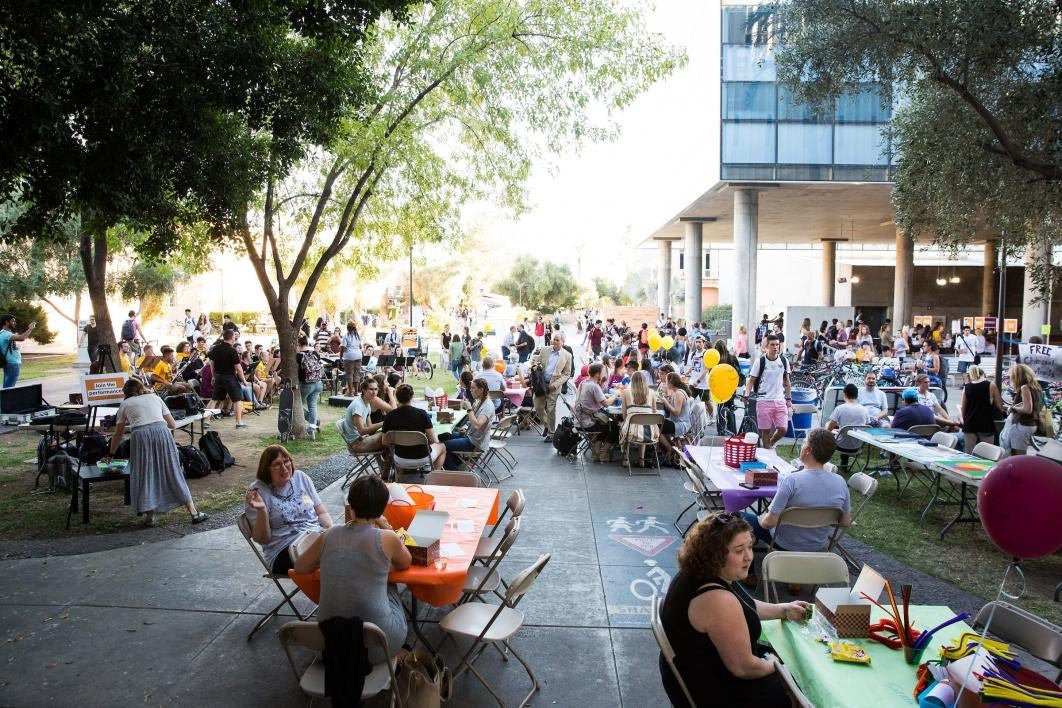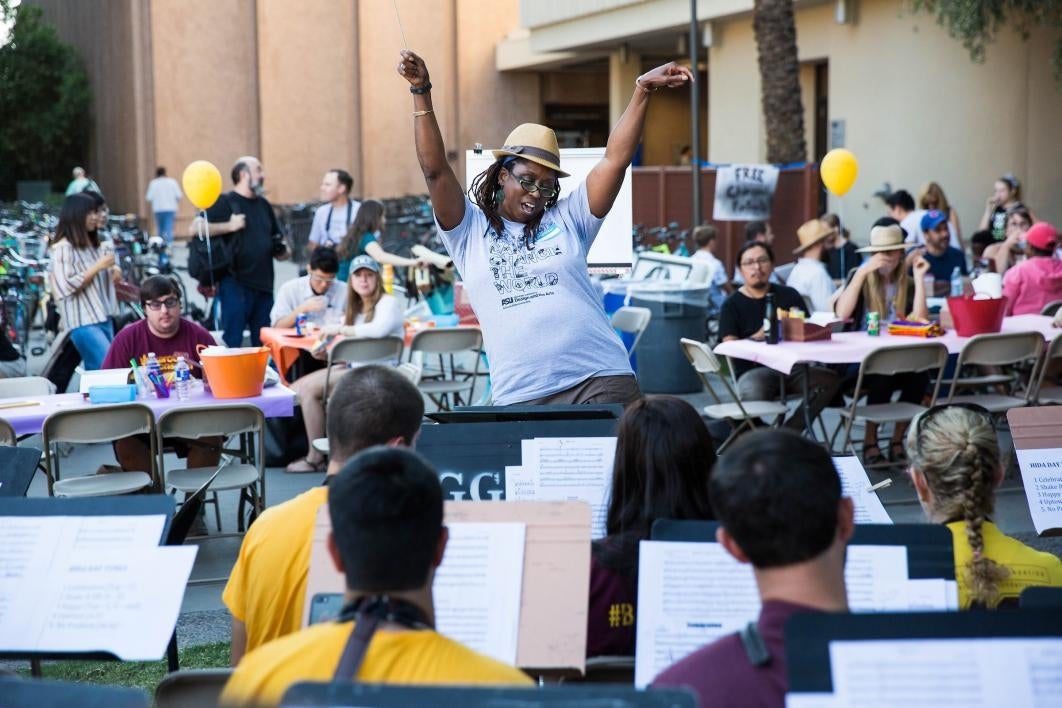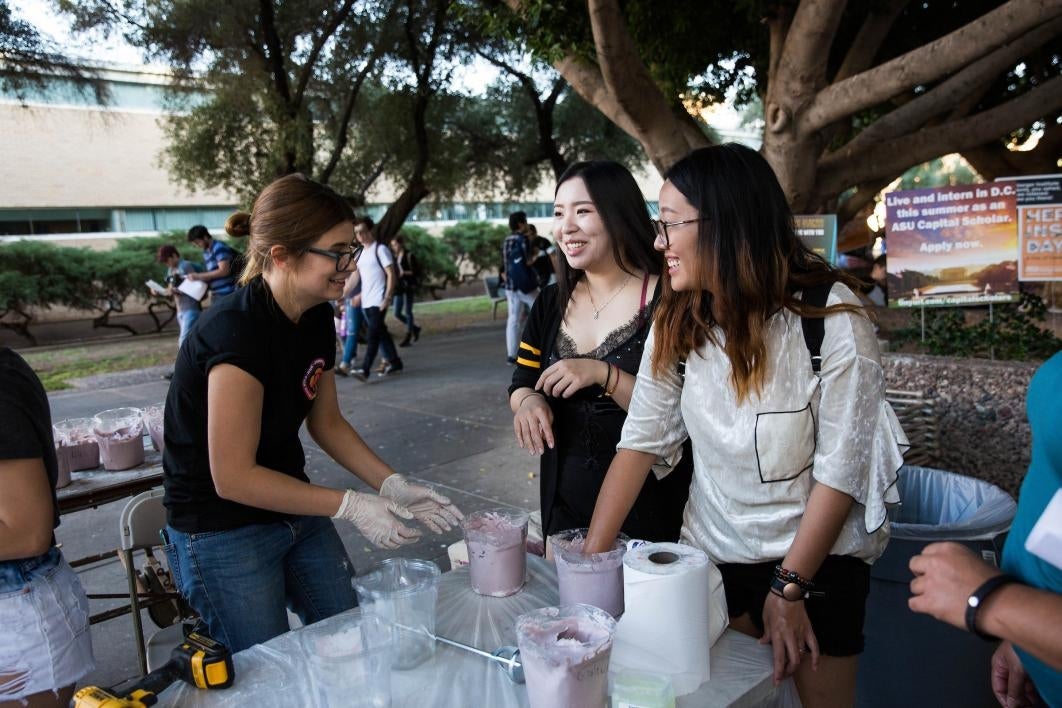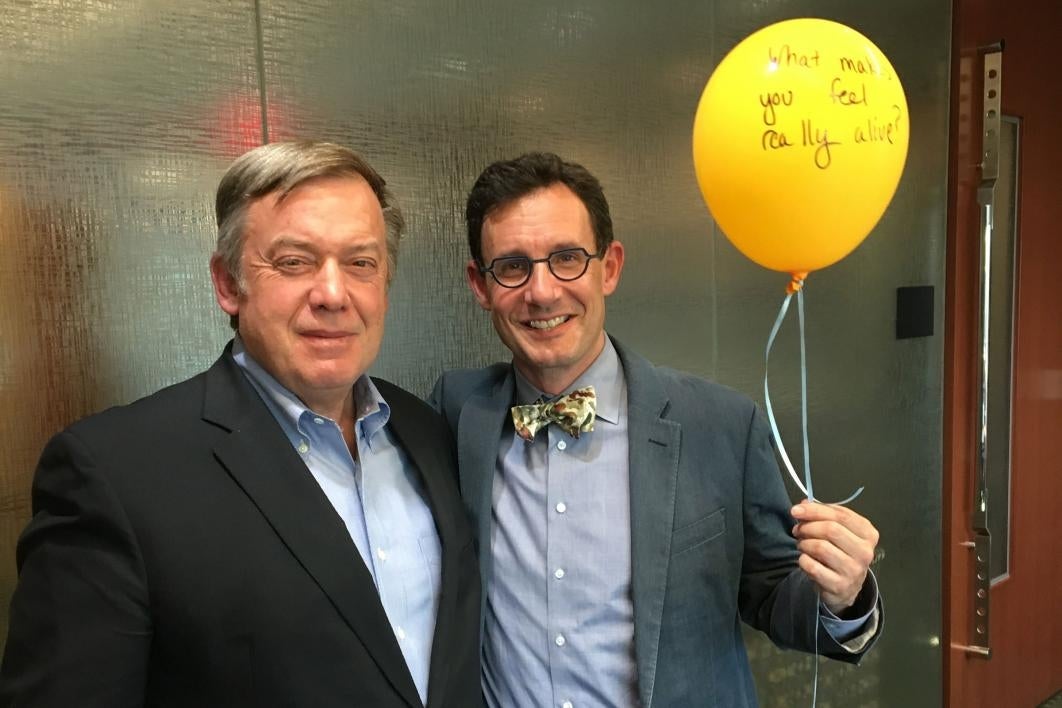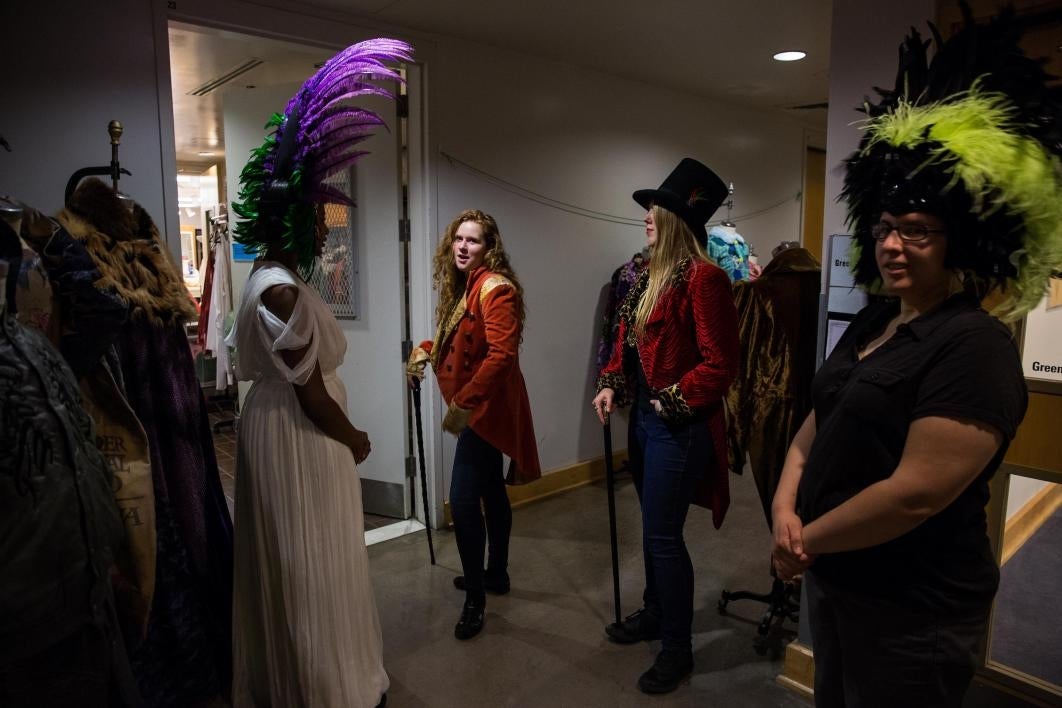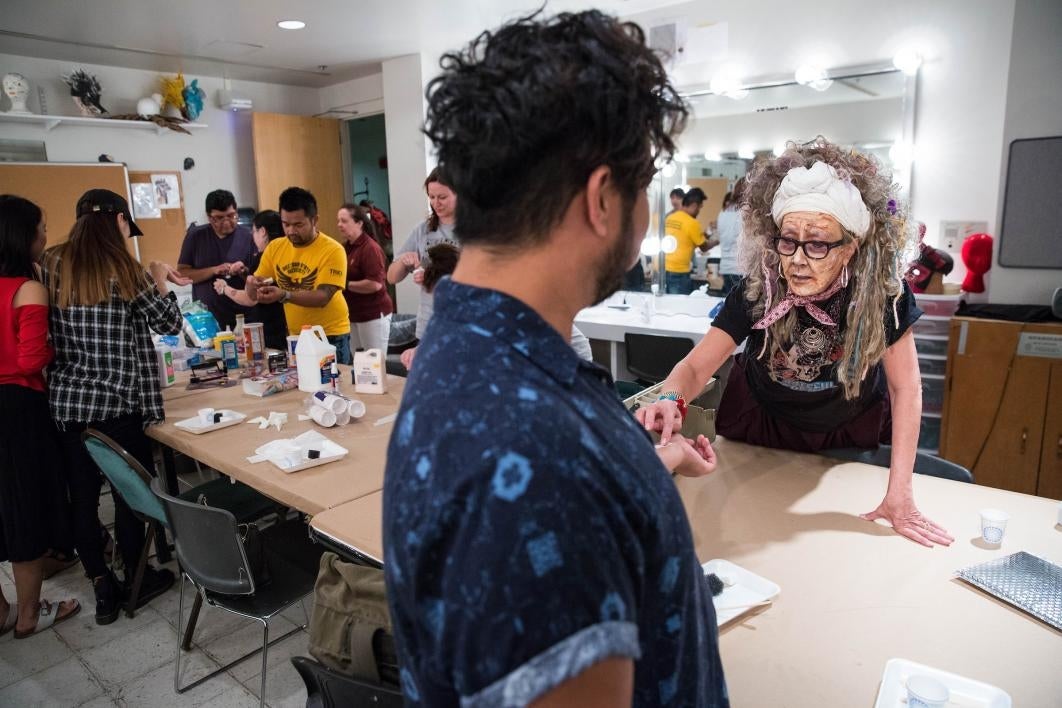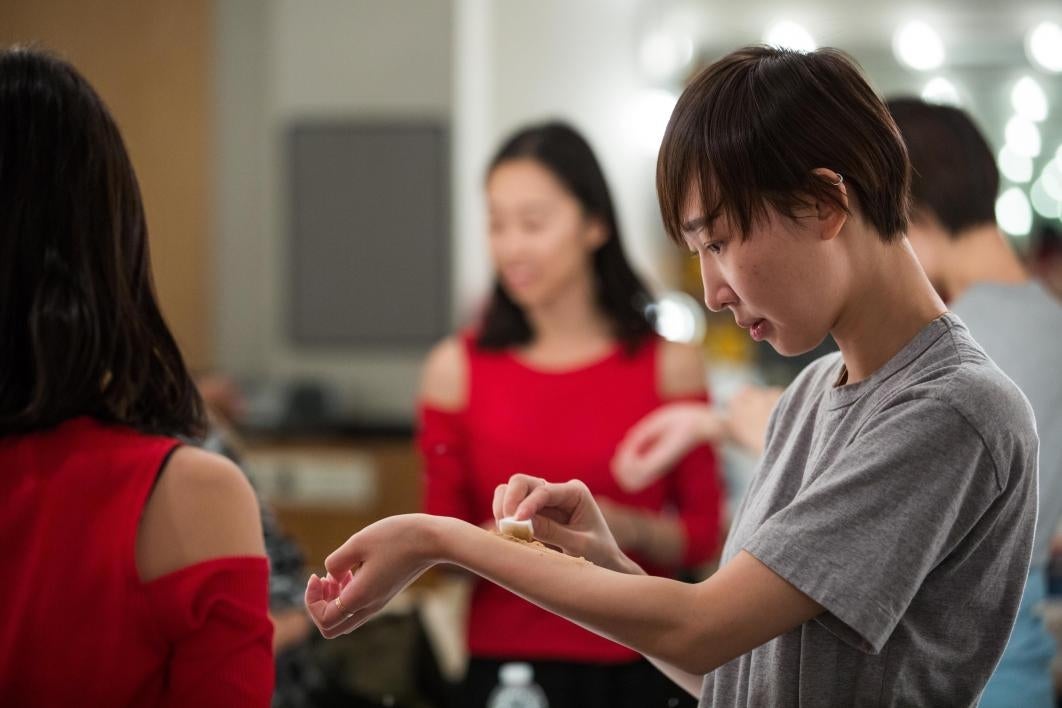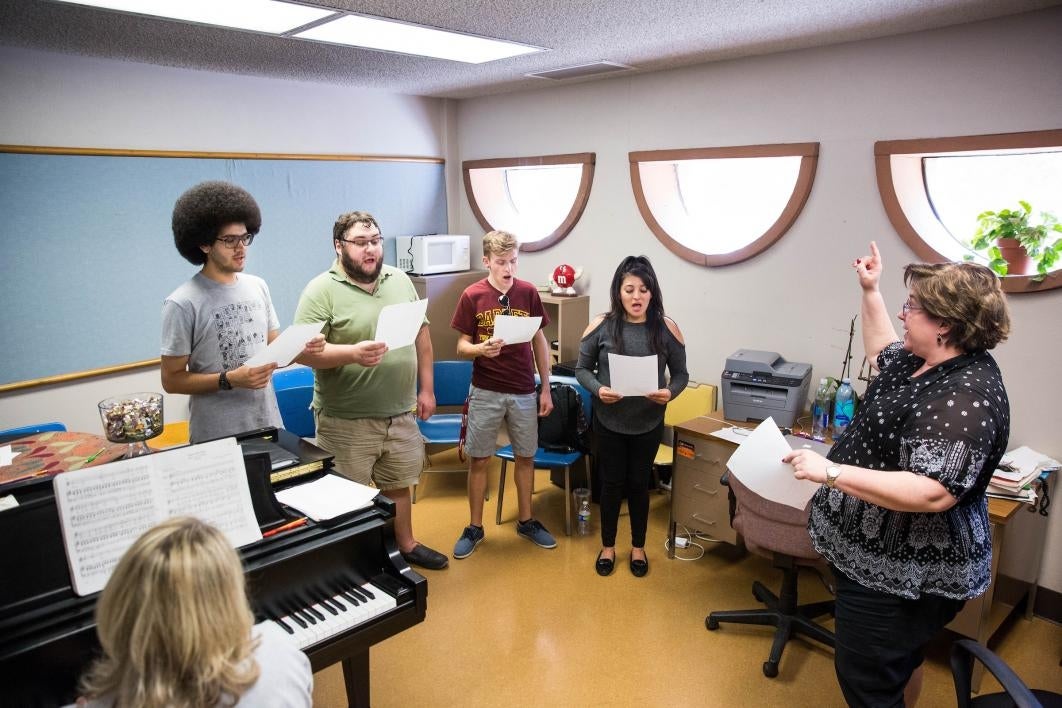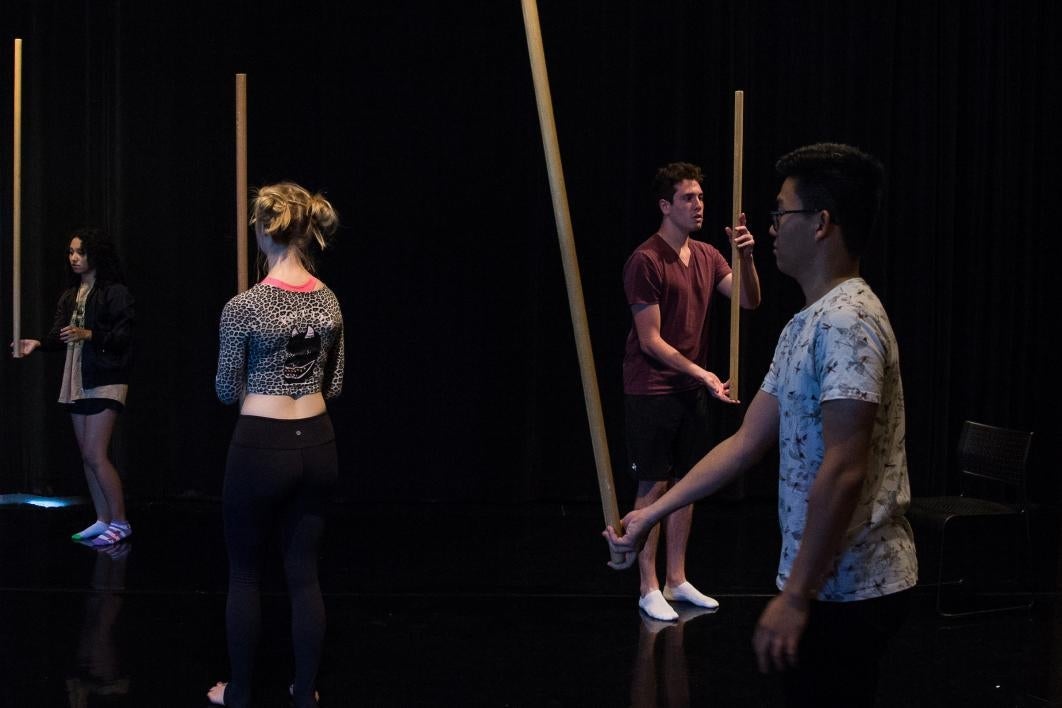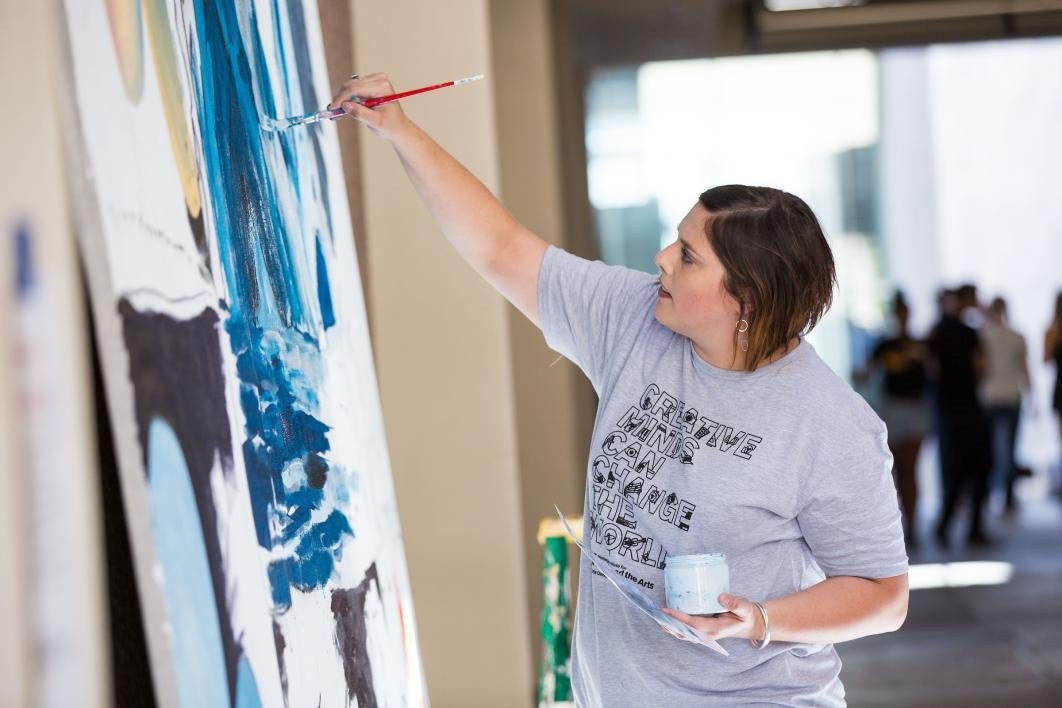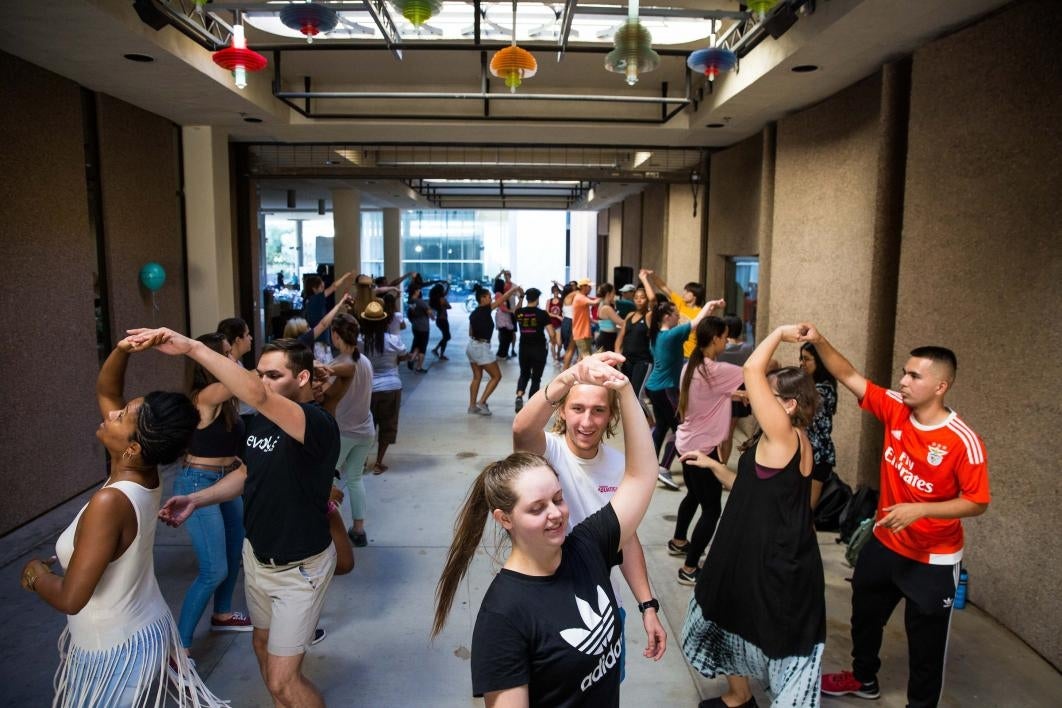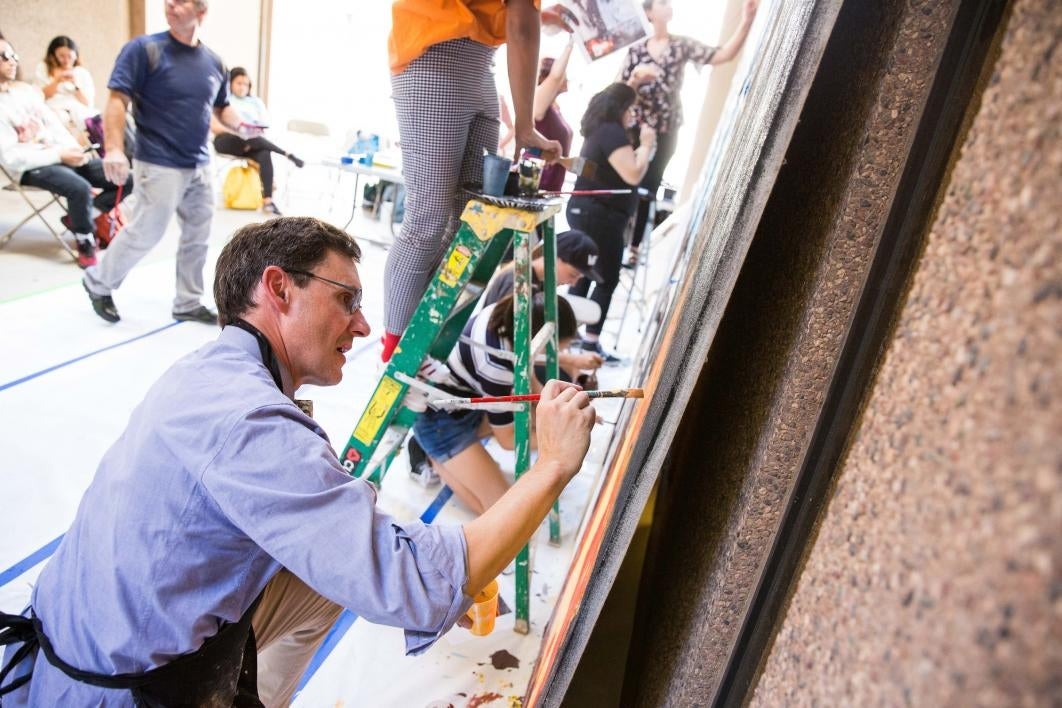First-ever Herberger Institute Day shows students the joy found in a world of arts

Ever since Dean Steven J. Tepper arrived at ASU, he has been working on a way to bring the diverse students, faculty, staff and alumni of Herberger Institute for Design and the Arts together. Given that ASU’s Herberger Institute is the largest comprehensive design and arts college in the nation, with five separate schools and an art museum, the task he set for himself was daunting.
On Oct. 12, together with the advice and support of design and arts faculty and staff, he made it happen.
The first ever Herberger Institute Day began with dozens of workshops offered by all all units — School of Art; School of Arts, Media and Engineering; The Design School; School of Film, Dance and Theatre; School of Music; and the ASU Art Museum. The workshops were open to Herberger Institute students, faculty, staff and alumni, who were encouraged to experiment with subjects outside their usual work and classes.
Video by Herberger Institute for Design and the Arts
The workshops ranged from Latin social dance in the Stauffer breezeway to “Sing like an opera singer in one easy lesson!” to a librarian-led workshop on “Art and Music: Creativity in Dark Times.” In between there was laughter yoga, the great cardboard chair challenge and a workshop on queer expressionsThe workshop description: "Camp, drag, disidentification, ambivalence, criminality, utopian and dystopian temporalities — queer artists use tactics like these to challenge normativity. Have you used similar strategies in your own work? This workshop invites artists from all of the schools in HIDA to bring examples of your own work or of artists you admire to share in a dialogue about queer expressions in dance, film, theater, music, art and technology, visual art and design." in dance, film, theater, music, art and technology, visual art and design.
In the “Musical Trash and Toy Circuits” workshop, participants dug through piles of random objects with guidance from Althea Pergakis, from the School of Arts, Media and Engineering, and then made music. It was, as promised in the description, “weird.”
Meanwhile, the museum conducted several workshops based on its popular Escape the Museum events and secret vault tours.
Third-year music education undergrad Katie Demassa, who had never been in the museum before Herberger Institute Day, said the event was “cool. I think I’ll go back (to the museum) now, because it was actually really fun.”
Amy Dicker, a third-year architecture undergrad who also experienced Escape the Museum, agreed.
“You joined little groups, so we got to meet new people,” she said.
Dicker said she hoped Herberger Institute Day would become an annual event, “just for the exposure to different things outside of your school.”
Digital culture undergrad Lisette Borja, who sported what looked like a nasty open wound on one of her forearms, took a behind-the-scenes tour of the costume shop and ghoulish makeup workshop. (The wound she explained, was from the workshop.)
“We got to play with cornstarch, we got to play with food dye … to make gooey bloody wounds and bruises.”
Her favorite part of the day, she said, was getting to spend time in the costume shop.
“I really really love costuming, but I’ve never done anything with it for my major,” shd said. “I liked just being in that area and seeing what the other students in that major were doing.”
It was a sentiment others seemed to share. As one group toured the costume shop, a student said aloud, “OK, this is cool. Why did I not know about this?”
Stephani Etheridge Woodson, faculty in the School of Film, Dance and Theatre and director of the Herberger Institute’s Design and Arts Corps, led more than 100 students in a “Find Your People” workshop: Participants were divided into teams, and each team had to complete two challenges as part of its quest. (Sample challenge: Find the COOR covered walkway. Ask someone how they are feeling today. Based on their response, create an indie rock band album cover photo. Photograph it and post it to Instagram.) For the third challenge, the teams had to locate the dean and complete an exercise with him. The final challenge involved individual team members each picking a balloon with a “conversation starter” on it and taking it out into the world so they could continue “finding their people” as they went throughout the day.
Tepper, who had a meeting with ASU President Michael Crow after the exercises with students, took a balloon along for the president. The question on the balloon read, “What makes you feel really alive?” President Crow’s answer: “Waking up in the morning.”
During Herberger Institute Day, the dean did some sketching in a fashion class and dropped in on a choir singing a South African song. He spent time painting a “speed mural” with School of Art Associate Professor Mark Pomilio and dozens of other volunteer painters. Tepper took part in an “Open Air Mattress Talk,” where participants “used their bodies and minds to break down boundaries and have an open conversation about consent and sexual-violence prevention on campus.” He also briefly conducted a brass band.
When the workshops concluded, more than 400 people gathered for the Meal on the Mall. They sat at tables covered in bright paper and worked with specially trained graphic recorders to capture, in pictures, a record of what the day meant to them. They ate box lunches and were entertained by pop-up performances, including climate-change plays led by Micha Espinosa, faculty in the School of Film, Dance and Theatre, and lively music from both a jazz ensemble and the brass band, which passers-by were free to conduct themselves.
The brass band, and watching people conduct it, was Gnyanesh Trivedi’s favorite part of the day. Trivedi is a mechanical engineering major doing his master’s degree at ASU, but he has taken introduction to acting at ASU.
“That’s why I’m here at Herberger (Institute) Day,” he said. “I was a part of the plays that they put up for climate change. I played a penguin, passing judgment on humans.”
“I love theater,” Trivedi continued. “I did a little bit of theater back in my home country, which is India. And I wanted to come here and explore what theater in the United States is like. And then being an engineer it gets really painful sometimes. The stress can be overpowering, but with my acting class I really get to explore another dimension of my personality.”
Trivedi echoed those who want to see the Herberger Institute Day become a regular tradition.
“It’s so much fun,” he said. “There’s happiness all around. I think this is something that brings joy to people. This is something that should be shared with as many people as possible on as large a scale as possible.”
So what are the chances of Herberger Institute Day happening again?
“It really depends on popular demand,” Tepper said as things drew to a close. “It was worth it, but it was a lot of work. Seeing everybody smiling and singing together and playing and creating and having a good time and realizing we’re this big creative family, or even this big creative city within ASU — it’s thrilling for me as dean. But I want to make sure everybody wants to do this again, and if they do we’re definitely all behind it.”
The bigger challenge, he said, is figuring out how to more forcefully integrate curriculum.
“We have to give our students more opportunity to explore across the Herberger Institute, we’ve got to develop more research and creative teams that are building out multidisciplinary projects together. We’ve got to build our Design and Arts Corps, which is going to bring students from different disciplines together to activate and engage with community partners.
“(Herberger Institute Day) is kind of a symbol of what’s possible. It’s a way to celebrate together. But we really have to put our shoulder to the wheel and figure out how we live every day in our curriculum and in the way we work and teach and interact and research, how we live that collaboratively and across all disciplines and schools. So we have a lot more work to do. But I think this is a great first step.”
Top photo: Liberal studies sophomore Jonah Ivy (center) enjoys the Latin dance workshop with fellow Herberger Institute students Oct. 12 on the Tempe campus. Photo by Deanna Dent/ASU Now
More Arts, humanities and education

Pen Project helps unlock writing talent for incarcerated writers
It’s a typical Monday afternoon and Lance Graham is on his way to the Arizona State Prison in Goodyear.It’s a familiar scene. Graham has been in prison before.“I feel comfortable in prison because of…

Phoenix civil rights activists highlighted in ASU professor’s latest book
As Phoenix began to grow following WWII, residents from other parts of the country moving to the area often brought with them Jim Crow practices. Racism in the Valley abounded, and one family at…

Happy mistake: Computer error brings ASU Online, on-campus students together to break new ground in research
Every Thursday, a large group of students gathers in the Teotihuacan Research Laboratory (TeoLab) in the basement of the School of Human Evolution and Social Change building on Arizona…


